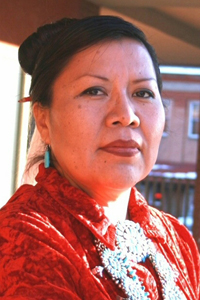
PHOENIX — Arizona will join a drought plan for the Colorado River, narrowly meeting a federal deadline that threatened to blow up a compromise years in the making for the seven states that draw water from the constrained river.
The Arizona House and Senate overwhelmingly supported the legislation and Gov. Doug Ducey promptly signed it, delivering the final puzzle piece needed to avoid potentially more severe cutbacks imposed by the federal government.
The river serves 40 million people in Wyoming, Colorado, Utah, New Mexico, Arizona, Nevada and California.
U.S. Bureau of Reclamation director Brenda Burman set a Jan. 31 deadline for all parties to agree to voluntary cutbacks.
Arizona was the only state that required legislative approval to join the agreement in which states would take less water from the river in hopes of keeping major reservoirs from reaching catastrophically low levels.
“We inherited as human beings a pristine land with pristine water, and we messed it up as human beings ourselves,” said Sen. Jamescita Peshlakai, a Democrat who represents the Navajo reservation in northeastern Arizona and voted to join the drought plan. “It is incumbent for us to safeguard, protect what we have left.”
The nightmare scenario for Arizona, California, Nevada and Mexico — which draw from Lake Mead — is a phenomenon called “dead pool,” in which the level of the lake’s surface falls below the gates that let water out. To avoid it, the agreement calls for an escalating array of cutbacks as the lake level drops.
Arizona has junior rights to river water and would be hit first and hardest if Lake Mead on its border with Nevada drops to shortage levels. Most residents will not see an impact from cutbacks, which will primarily hit farmers in Pinal County — between Phoenix and Tucson — who have the lowest-priority access to Colorado River water and stand to lose the most.
The Arizona legislation is the product of months of negotiations between major water users in the state, who agreed to reduce their take in exchange for cash or access to groundwater in the future. The farmers, who reluctantly supported the agreement, said it would require them to fallow as much as 40 per cent of the county’s farmland.
“We know nothing is perfect, but this is pretty darn good,” said Senate President Karen Fann, a Republican from Prescott.
Arizona water officials say joining the agreement is critical to the state’s water future.
“The drought is real, and there’s less water in the river,” Dennis Patch, chairman of the Colorado River Indian Tribes, told lawmakers this week. “We can see it. We must all take a realistic view of this river and realize it does not have as much water as it used to.”
Opposition came from a handful of Democrats who said the deal didn’t do enough to rein in the state’s water consumption. Sen. Juan Mendez characterized the deal as a giveaway to interest groups that promotes unsustainable water policy, ignores climate change and doesn’t address the fact that Arizona will have less water in the future.
If Arizona were serious about the drought, Mendez said, “we would be entertaining an honest assessment of whether we can continue to base our state’s economy on continuous growth and on welfare for water intensive uses.” Mendez, a Tempe Democrat, was one of only a handful of lawmakers to vote against the measures.
Arizona agreed in the 1960s to take the lowest-priority position for Colorado River water in exchange for votes from California members of Congress to build the Central Arizona Project. The massive canal system moves Colorado River water to the desert of central and southern Arizona.
The bargain provided drinking water for fast-growing Phoenix and Tucson and for farmers. But in drought, it means Arizona is hit first and hardest if the river can’t deliver a full allotment of water.
Arizona lawmakers backed two measures. One allows Arizona to join the multi-state agreement. The other includes a variety of measures to help Pinal County farmers. Those include $9 million for the farmers to drill wells, dig ditches and build other infrastructure needed for them to change from the river to groundwater.
Tucson would get more groundwater credits for treated wastewater, allowing the city to pump more in the future in exchange for providing water to Pinal farmers.
The drought plan requires Arizona to find a way to reduce its use of Colorado River water by up to 700,000 acre-feet — more than twice Nevada’s yearly allocation under the drought plan. An acre-foot is enough for one to two households a year.
Colorado, Wyoming, Utah and New Mexico had their plans done in December.